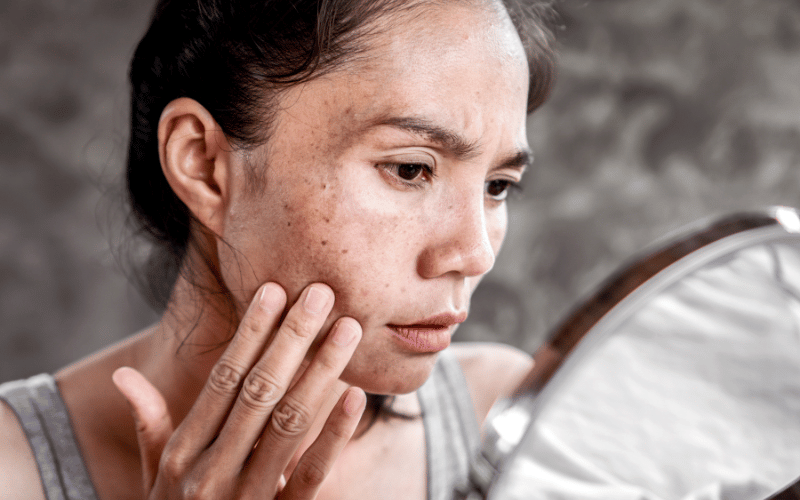6. Darkened Skin Patches – A Visual Clue to Underlying Issues

Darkened patches of skin, particularly around the neck, elbows, armpits, and knuckles, can be a visual clue to underlying issues related to Type 2 diabetes. This condition, known as acanthosis nigricans, is characterized by areas of dark, velvety skin.
These changes in skin appearance can be subtle at first, gradually becoming more noticeable over time. While they may not be painful or itchy, their presence is a signal that your body is experiencing insulin resistance.
Insulin resistance plays a central role in the development of these darkened skin patches. When the body’s cells resist insulin’s effects, it leads to an increase in insulin production. High levels of insulin can stimulate the growth of skin cells, leading to the characteristic dark, thick patches of skin.
This skin condition is often associated with Type 2 diabetes, but it can also be a sign of prediabetes or insulin resistance. Recognizing these skin changes can be a crucial step towards seeking medical advice and addressing underlying insulin issues.
Managing blood sugar levels through a balanced diet, regular exercise, and medication (if prescribed) can help address the root cause of these skin changes. As insulin resistance improves and blood sugar levels stabilize, you may notice a gradual lightening of the darkened skin patches.
In addition to managing blood sugar, adopting a skincare routine that includes gentle cleansing and moisturizing can help improve the appearance of the affected areas. Avoiding harsh skin treatments and protecting your skin from sun exposure can also contribute to skin health.
If you notice darkened patches of skin, especially in the commonly affected areas, seeking medical advice is crucial. A healthcare professional can assess your symptoms, run tests to check your blood sugar levels, and provide guidance on managing insulin resistance.
They can also recommend topical treatments to improve the appearance of the skin and address any associated itching or discomfort. Together, you can work towards a comprehensive approach that addresses both the visual symptoms and the underlying insulin resistance. (6)